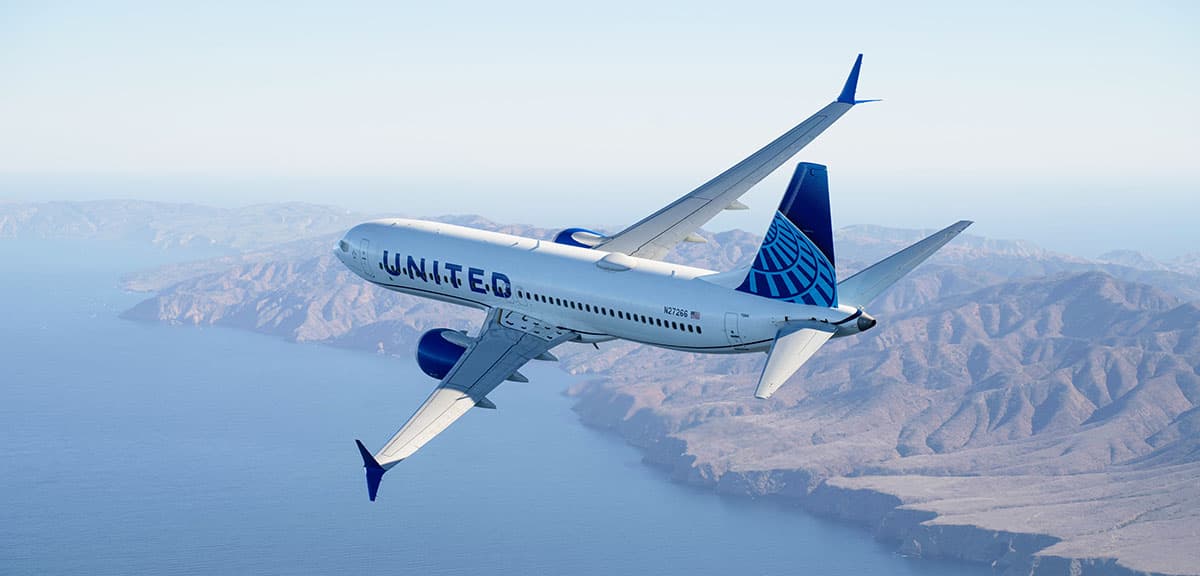
United is on a mission to redefine the future of air travel with sustainability at the forefront. We believe that it is critical to continue to serve our purpose of connecting people and uniting the world, and we aim to find more sustainable solutions while also achieving our financial goals. Our ambitions are anchored in our business strategy, as building a future of sustainable aviation benefits our customers, employees and shareholders.
To meet our 2050 goal, United has adopted a mid-term target of reducing its carbon emissions intensity by 50% by 2035 from a 2019 baseline.Footnote 1 This intensity target provides a nearer-term benchmark towards our long-term goals and received independent validation from the Science Based Targets initiative (SBTi) in May 2023.
Our strategy to achieve our goals is centered around four key pillars:
Drive fuel efficiencies and innovation in flight
Aim to reduce our conventional jet fuel consumption and GHG emissions by optimizing our fleet and operations while investing in lower carbon technologies
Adopt more sustainable alternatives
Help to scale, commercialize and adopt sustainable aviation fuel (SAF) within aviation through demand signals, investment and procurement
Integrate sustainability efforts at every altitude
Strive to reduce our environmental footprint by seeking to embed more sustainability across our enterprise and through innovation
Collaborate with partners
Work with policy leaders, airports, communities, employees and other stakeholders across our value chain to advance the future of a more sustainable flight
1. Drive fuel efficiencies and innovation in flight
Our primary objective is to reduce the emissions from United’s current conventional jet fuel consumption, which is the single largest contributor to our environmental footprint. We detail how we do this in the roadmap to net zero by 2050.
We detail how we do this in the illustrative roadmap to net zero by 2050.
2. Adopt more sustainable alternatives
United’s objective is to help commercialize and scale sustainable aviation fuels (SAF), as they are a technological solution in development today that can abate emissions from flight operations.
For more detailed information on SAF, please refer to our illustrative roadmap to net zero by 2050.
3. Integrate sustainability efforts at every altitude
Our responsibility to address our environmental impact extends beyond the emissions generated from our flights to operations across our business.
For more information on how we do this, please refer to the sustainability at every altitude section.
4. Collaborate with partners
Our journey towards sustainable aviation is a collective effort. We are working with customers, employees, airports, suppliers, cross-industry partners and policymakers to advance sustainable solutions for aviation. Our collective goal is to expand the supply of SAF, invest in scalable decarbonization technology solutions and reduce our environmental footprint.
For more information on how we do this, please refer to the collaborating to help drive environmental progress section.
Footnotes
- United’s complete target, as validated by the SBTi states “United Airlines commits to reduce scope 1, 2, and well-to-wake jet fuel GHG emissions, including scope 3 category 4, upstream transportation and distribution 50% per revenue ton kilometer (RTK) by 2035 from a 2019 base year. The target boundary includes biogenic emissions and removals from bioenergy feedstocks. Non-CO2e effects which may also contribute to aviation induced warming are not included in this target. United Airlines Inc. commits to report publicly on its collaboration with stakeholders to improve understanding of opportunities to mitigate the non-CO2e impacts of aviation annually over its target timeframe.”
